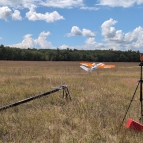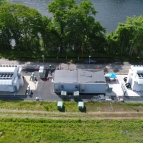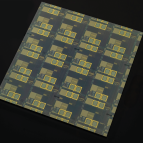High-Assurance Cryptography

The United States uses cryptography to protect information critical to national security from unauthorized disclosure and modification. To provide effective protection, the devices that store, transmit, receive, and process such sensitive information must adhere to U.S. government standards for high assurance, including protections against algorithm analysis, physical tampering, electronic signal leakage, and extraction of cryptographic keys.
In addition to satisfying these requirements, the Department of War is in need of cryptographic modernization to enable secure communication in the dynamic, fast-paced scenarios the nation may face in future conflicts. For example, systems will need to interoperate with foreign partners, report health and status remotely, accept configuration updates, and participate in dynamic networks enabling joint all-domain operations. Cryptographic modernization needs such as these are especially challenging to meet for devices with constrained computational resources and communications availability.
Through the High-Assurance Cryptography program portfolio, Lincoln Laboratory is overcoming these challenges by developing cutting-edge technologies to meet the highest standards for information security at the tactical edge. These technologies will be transitioned into systems such as airborne drones, autonomous ground vehicles, and satellite communication terminals. The team has completed several important milestones, such as delivering reference designs and prototypes with high technology-readiness levels, completing two National Security Agency certifications, and developing system interfaces that have become DoW standards. Many of these technologies have led to publications in high-profile research conferences and U.S. patents.
Today, the team is addressing new challenges such as secure internetworking for proliferated satellite constellations, post-quantum cryptography and key management, software-based high-assurance cryptographic devices, and sustainable cryptographic device architectures. These efforts will help transform and modernize our nation’s cryptographic capabilities and realize the vision of cryptographic modernization for our nation’s warfighters.
Related
Lincoln Laboratory technologies win seven R&D 100 Awards for 2025










